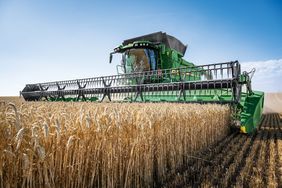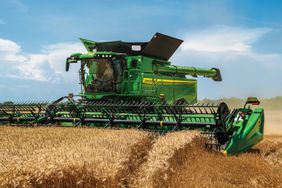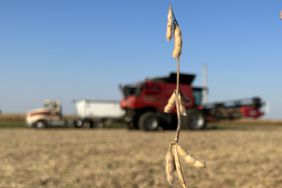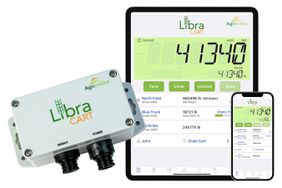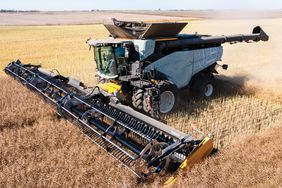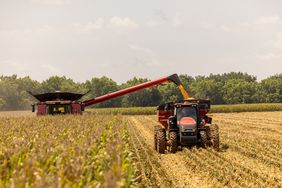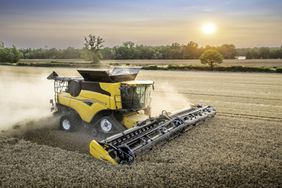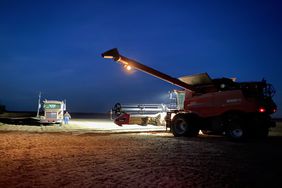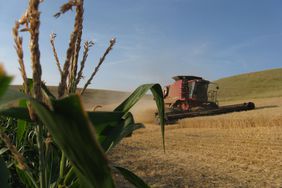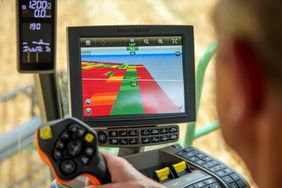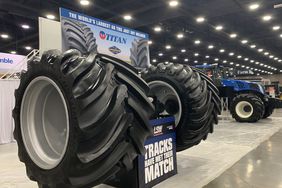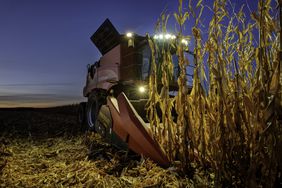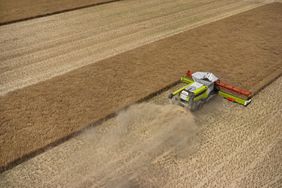:max_bytes(150000):strip_icc()/Screen20Shot202016-12-0720at204.52.5420PM-fd54fdd5160c4a4db68ccacafff1cabb.png)
Traveling from one wheat field to the next only to discover that the moisture level wasn't quite right for harvest was a frustration Martin Bremmer knew only too well.
"Taking my full-size combine out to a field was very expensive and slow," says the retired Venango, Nebraska, farmer. "It could only drive 20 mph down the road, and I had to pull over for every vehicle that needed to use that road. In this day and age, when you have a relatively new combine, you're spending $120 per hour in depreciation costs."
Experts say about 30% of a combine's time is spent driving down the road to the next destination. If you're a custom harvester, that loss of productivity impacts not only several combines, but also trucks, tractors, grain carts, and the employees operating those machines.
If you don't use a combine, you may employ the tried-and-true bite test, but it, too, could prove costly. "You can't fault the bite test. However, the bite test for you may not be same as the bite test for me," Bremmer says.
Inaccurate information can also mean missed opportunity. "A 2,000-acre field that is ready to cut – but no one is yet aware of it – can lose approximately 12 pounds per acre or up to $2,600 per day due to shrinkage," he explains. "The average farmer and custom harvester have been unaware of those losses. When the price of grain drops, it is imperative to use whatever method necessary to cut the cost of production, but you must also think about a way to prevent losses."
Bremmer knew it was time to rethink the way grain was sampled. "In my mind, I had been designing and redesigning a tool to make harvesting small grains more economical and faster," he says.
Several prototypes later, Bremmer developed the GrainGoat. It's a handheld, battery-powered combine that collects, cleans, and calculates moisture in minutes.
Weighing a little more than a bowling ball, the shoulder strap allows you to carry it with ease into the field.
In typical conditions, the GrainGoat needs four minutes to collect the sample in the grain sample bin. Bremmer recommends running it for a minute in four locations to gain a better moisture sample across a field.
"You hold the machine at grain head level, which allows it to strip the seeds from the heads rather than cut or pull the heads," he explains. "Once collected, simply press the moisture meter button and an instant reading of the sample is provided."
The GrainGoat can accommodate all small grains including wheat, oats, peas, barley, millet, and milo. It will not sample corn. He plans to test soybeans and rice this year.
Manufactured and assembled in Nebraska, the patented GrainGoat sells for $1,999. It comes with screens, 20-volt lithium-ion battery, battery charger, and shoulder strap.
"GrainGoat is designed to work like any other cordless power tool," says Bremmer. "You pull the trigger, harvest the grain, push a button to sample moisture, and you're done. It's really that fast and easy."
